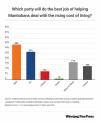NDP’s half-baked ER plan won’t heal broken health system
Advertisement
Read this article for free:
or
Already have an account? Log in here »
To continue reading, please subscribe:
Monthly Digital Subscription
$0 for the first 4 weeks*
- Enjoy unlimited reading on winnipegfreepress.com
- Read the E-Edition, our digital replica newspaper
- Access News Break, our award-winning app
- Play interactive puzzles
*No charge for 4 weeks then price increases to the regular rate of $19.00 plus GST every four weeks. Offer available to new and qualified returning subscribers only. Cancel any time.
Monthly Digital Subscription
$4.75/week*
- Enjoy unlimited reading on winnipegfreepress.com
- Read the E-Edition, our digital replica newspaper
- Access News Break, our award-winning app
- Play interactive puzzles
*Billed as $19 plus GST every four weeks. Cancel any time.
To continue reading, please subscribe:
Add Free Press access to your Brandon Sun subscription for only an additional
$1 for the first 4 weeks*
*Your next subscription payment will increase by $1.00 and you will be charged $16.99 plus GST for four weeks. After four weeks, your payment will increase to $23.99 plus GST every four weeks.
Read unlimited articles for free today:
or
Already have an account? Log in here »
Hey there, time traveller!
This article was published 22/09/2023 (814 days ago), so information in it may no longer be current.
Even if an NDP government does reopen three emergency departments in Winnipeg as promised — and that’s a big “if” — the ERs wouldn’t look anything like the ones that existed prior to 2017.
NDP Leader Wab Kinew confirmed that following a leaders’ debate this week at the convention centre.
“I think that the emergency rooms are going to look different than they did in the past,” said Kinew, when pressed for further details on his party’s promise to reopen three ERs that were converted to urgent-care centres under the Tory government. “We’re focused on building the health-care system for the future.”
JOHN WOODS / WINNIPEG FREE PRESS FILES
Between 2017 and 2019, the Tory government consolidated acute-care operations from six to three facilities: St. Boniface Hospital, Health Sciences Centre and Grace Hospital.
So what exactly would these new ERs look like if the NDP wins government on Oct. 3? That’s a bit murky. Kinew was asked whether the three hospitals in question would revert back to acute-care facilities, with a full slate of medical services normally available at such centres. Not exactly, said Kinew.
“It will involve an expansion of services,” said the NDP leader. “They’re going to look different than they did in 2016, however.”
In 2016, there were six acute-care hospitals in Winnipeg, each with their own ERs. Between 2017 and 2019, the Tory government consolidated acute-care operations from six to three facilities: St. Boniface Hospital, Health Sciences Centre and Grace Hospital. The other three — Seven Oaks, Concordia and Victoria hospitals — became community hospitals with urgent-care centres, but without services such as an ER and intensive-care units.
Kinew says those community hospitals won’t return to what they were prior to 2017. They won’t have ICUs or the full slate of medical services ERs normally require to handle high-acuity cases, such as stroke and cardiac patients.
Instead, according to Kinew, government will open “step-down beds” at Victoria, Seven Oaks and Concordia hospitals, bring in one-to-one nurse-to-patient ratios and enhance patient-monitoring capabilities. But they will not be full-service, acute-care hospitals like they were before.
Which raises the question: what’s the point of reopening an ER without the full slate of support services if high-acuity patients have to get rerouted to HSC, St. Boniface or Grace hospitals? That’s precisely what would happen if government put up an “emergency department” sign at a community hospital without the required medical services to support it. It may even encourage patients to go to the wrong hospital.
There are several confusing aspects to the NDP plan. The “step-down” beds they’re referring to are for post-operative or post-ICU patients. Step-down beds have nothing to do with an ER, especially in a hospital that doesn’t have an ICU. Also, one-to-one nursing ratios exist in ICUs, not ERs or medical wards, where nurses look after more than one patient at a time. Kinew and the NDP are getting bad advice.
Emergency departments are the patient portals of hospitals. Patients at all levels of acuity show up at ERs for treatment. The sickest ones are seen first and are sometimes admitted to hospital. The least-acute patients wait longer. There’s little point opening an ER if the sickest patients don’t have access to ICUs, internal medicine, 24-7 diagnostic services and specialists, such as cardiologists and neurologists.
If the three ERs slated for reopening under the NDP don’t have access to those services, seriously ill patients who arrive will have to be transported elsewhere, which defeats the purpose of having more ERs.
If the NDP’s objective is to reduce ER wait times, this isn’t how it’s done. Wait times are caused by access block, where admitted patients pile up in ERs because of hospital overcrowding and a lack of capacity. Opening more ERs won’t solve that unless there is a corresponding increase in acute-care hospital capacity. The question then becomes: do you increase capacity at the three existing acute-care hospitals, including adding more staffed medical beds and improving patient flow, or do you spread your resources thinly around six hospitals and reopen ERs without the required medical services to support them?
These will be some of the questions the NDP will grapple with in real-world health-care management if the party wins government.
There are some good ideas in the NDP’s hospital plan. The party’s pledge to open more step-down beds for post-operative patients at Concordia would help boost orthopedic surgical volumes. And a promise to make Seven Oaks Hospital the kidney centre for the province with 24-7 dialysis would improve patient care.
But the pledge to reopen ERs without a full complement of required services is more about trying to win an election than sound health-care policy. This is mostly back-of-the-napkin policy-making. It doesn’t lend itself well to finding effective solutions to complex health-care problems.
tom.brodbeck@freepress.mb.ca

Tom Brodbeck is an award-winning author and columnist with over 30 years experience in print media. He joined the Free Press in 2019. Born and raised in Montreal, Tom graduated from the University of Manitoba in 1993 with a Bachelor of Arts degree in economics and commerce. Read more about Tom.
Tom provides commentary and analysis on political and related issues at the municipal, provincial and federal level. His columns are built on research and coverage of local events. The Free Press’s editing team reviews Tom’s columns before they are posted online or published in print – part of the Free Press’s tradition, since 1872, of producing reliable independent journalism. Read more about Free Press’s history and mandate, and learn how our newsroom operates.
Our newsroom depends on a growing audience of readers to power our journalism. If you are not a paid reader, please consider becoming a subscriber.
Our newsroom depends on its audience of readers to power our journalism. Thank you for your support.












